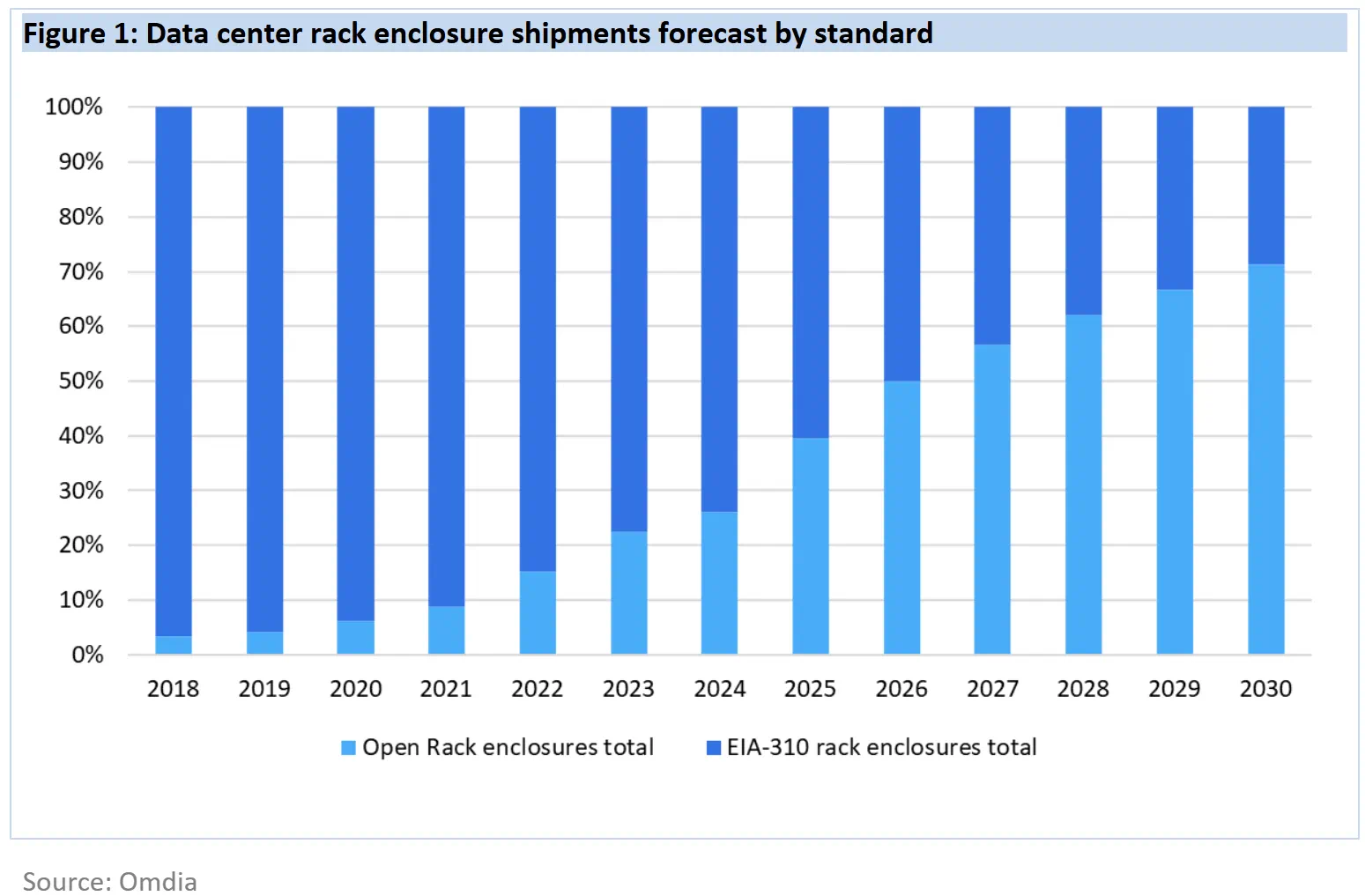- Dell and HPE drive shift toward 21-inch rack and modular DC-MHS adoption
- AI systems benefit from wider frames allowing for better airflow cooling and power capacity
- Cloud Providers Standardize on 21-Inch Open Rack as Demand for AI Servers Rises
New research has claimed that data center operators are beginning to move away from traditional 19-inch EIA-310 racks in favor of wider 21-inch Open Rack designs.
An Omdia report says the newer format could account for more than 70% of rack shipments by 2030 as AI and cloud operators continue to expand their infrastructure.
The change is being driven by server manufacturers and cloud service providers who have adopted the principles of the Open Compute Project.
Hyperscalers lead the charge

Dell and HPE are among those that support the data center modular hardware system, or DC-MHS, which is based on the Open Rack architecture.
Omdia’s assessment of upcoming server designs shows that up to 90% of Dell’s future systems could move to this broader form factor.
The approach allows compute and storage modules to operate at rack scale rather than as separate units.
The increasing use of AI is, naturally, another key reason for the transition. Systems built for machine learning rely on dense wiring, liquid cooling, and higher power delivery, all of which work more efficiently in a larger framework.
The 21-inch design provides additional airflow and space for larger fans, improving cooling on heavier, hotter components.
This additional space also makes it easier for engineers to install high-capacity power distribution and maintain internal wiring layouts without restricting airflow.
The design also leaves room for future improvements as processors evolve and server density continues to increase.
Hyperscalers such as Microsoft, Amazon, Google, Meta, Huawei and Oracle are already adopting the 21-inch form factor as the primary standard.
Suppliers to these companies report continued investment and a clear backlog of AI-related hardware.
Wiwynn, one of the largest manufacturers serving cloud providers, has reported strong demand for AI servers and is expanding its production capacity to meet longer-term orders.
Omdia expects rack shipments to grow faster than server shipments for the first time in ten years, with total revenue rising to about $4.1 billion by 2030.
The combination of higher capacity racks and modular server designs is expected to redefine how future data centers are planned and scaled globally.
Follow TechRadar on Google News and add us as a preferred source to receive news, reviews and opinions from our experts in your feeds. Be sure to click the Follow button!
And of course you can also follow TechRadar on TikTok for news, reviews, unboxings in video form and receive regular updates from us on WhatsApp also.



